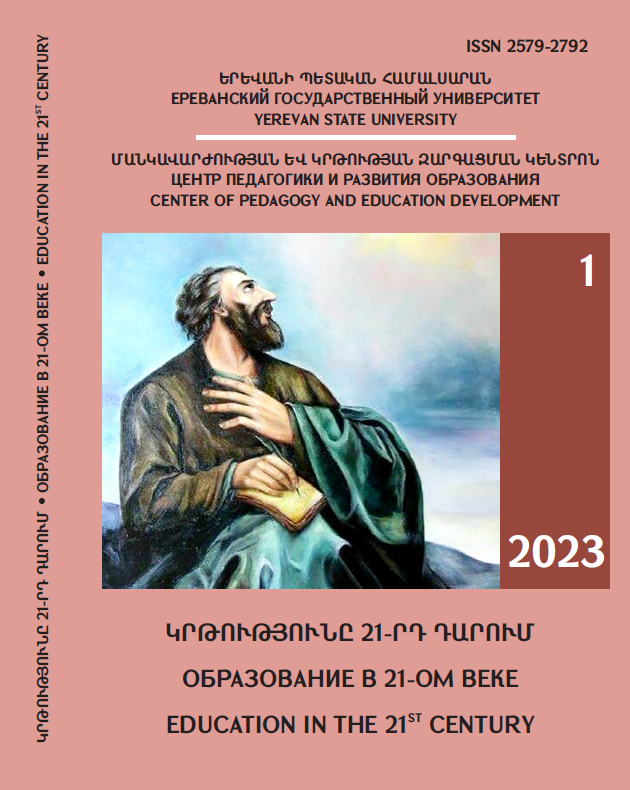THE PECULIARITIES OF TEACHING SINGULAR AND PLURAL NOUNS IN ENGLISH AND RUSSIAN CLASSES IN MIDDLE SCHOOL
DOI:
https://doi.org/10.46991/ai.2023.1.154Keywords:
foreign language, foreign language teaching, noun, plural and singular forms, plural, methods of teaching, didactic material, systematizing of learning processAbstract
With the intensive growth of globalization processes in today’s society improving the efficiency of foreign language teaching methods and techniques, acquisition of basic knowledge of foreign languages already from school onwards, takes a special place in the education system. For Armenian schools, this primarily concerns the two most widely spoken languages, Russian and English, which fluency is one of the basic requirements for employment in many areas of human activity in modern society. Foreign language learning involves many components, and one of the basic concepts in any language is the noun, its number, gender and case. The particularities of teaching one of the grammatical features of a noun, the singular and the plural in English and Russian in Armenian schools are examined in this article. The methods used in English and Russian language textbooks of Armenian schools were reviewed; difficulties that middle and high school students may encounter in learning the plural of a noun were identified; specific didactic materials were proposed which, in our opinion, will help to increase the efficiency of the process of mastering in the mentioned grammatical material in Armenian middle schools by systematizing the main rules of formation of plural in Russian and English with the help of vivid pictures and tables.
Key words: foreign language, foreign language teaching, noun, plural and singular forms, plural, methods of teaching, didactic material, systematizing of learning process
References
Аветисян Г. О., Методика обучения множественному числу существительного в общеобра¬зо-вательной школе. Ширакский государственный университет им. М. Налбандяна. Ученые записки. Выпуск Б. № 1 – 2018г.
Арбатский, Д. И., О лексических значениях форм множественного числа имен существите¬ль-ных в современном русском языке. НДВШФН 1958, 4, 65–74
Бабаян Т. А., Егиазарян М. А., Лалаянц С. Г., Русский язык. Учебник для 5-го класса основной школы. Ереван, МАНМАР, 2014, с. 79.
Балаян Л., Особенности преподавания структуры множественного числа имен существитель-ных (на армянском языке). Ереван, 2022.
Виноградов В. В., Русский язык. (Грамматическое учение о слове): Уч. пособие для вузов/Отв. ред. Г. А. Золотова, 3-е изд., 1. Высш. школа, 1986, с.129.
Гаспарян Г. Английский. Учебник 5-го класса общеобразовательной школы / Г. Гаспарян, Ер. МАНМАР, 2014, 160 с.
Концепция преподавания русского языка в учебных заведениях Республики Армения, реализующих общеобразовательные программы. Единый веб-сайт для публикации правовых актов. Электронный источник: https://www.e-draft.am/ru/projects/415/about.
Манукян Н., О некоторых методах обучения английскому языку. ЕГУ. Иностранные языки в высшей школе. 2019, 1 (26) с. 193.
Downloads
Published
How to Cite
Issue
Section
License
Copyright (c) 2023 Lilit Sargsyan

This work is licensed under a Creative Commons Attribution-NonCommercial 4.0 International License.

